Campus Tour
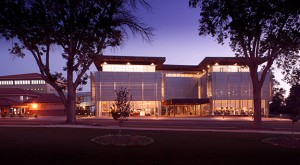
Student Center
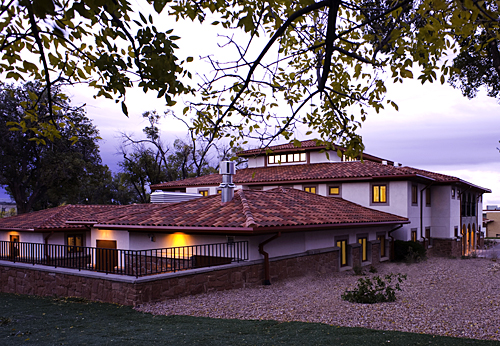
Felix Martinez Student Services Center
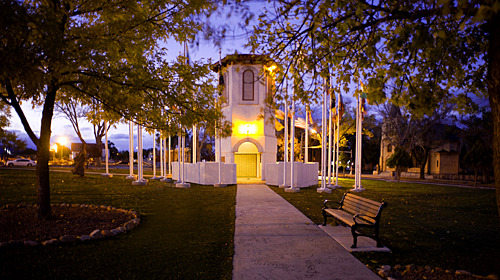
The Diversity Flagship and Alumni Tower
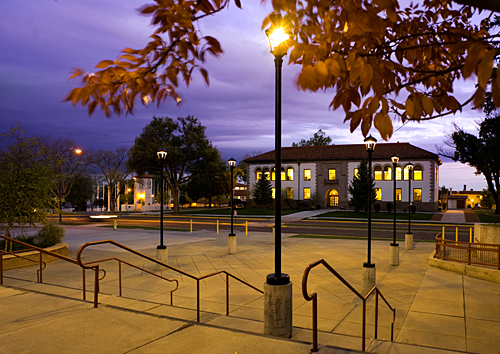
Rodgers Hall Administration Building
Named in honor of Thomas C. Rodgers, a professor of mathematics who also served as academic dean of the Normal University. He guided hundreds of students over the years who found his council good and his friendship an inspiration. Once used as the campus library, Rodgers Hall now houses the offices of the president, vice presidents and the cashier’s office.
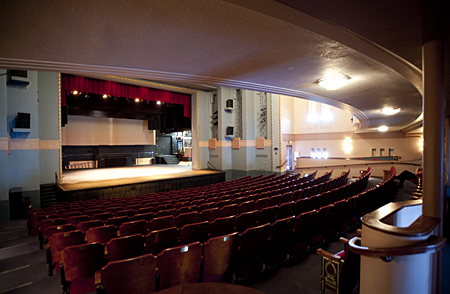
Ilfeld Auditorium
The oldest building on campus was named for Adele Ilfeld, wife of Charles Ilfeld, a prominent Las Vegas businessman who donated $25,000 to the building project. Charles Ilfeld was a civic leader and served on the Board of Regents of the Normal School. The board subsequently named the building after his deceased wife, Adele. He and his brothers were pioneering businessmen in New Mexico and representatives of a thriving German-Jewish community in Northern New Mexico. Ilfeld is the entertainment venue for the campus. In addition to concerts and theater productions, the building is home to Cineflix at Ilfeld, which features free movies each week.
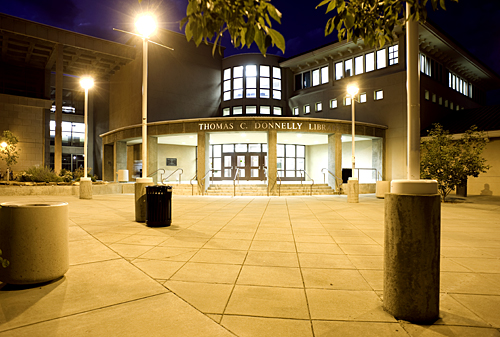
Thomas C. Donnelly Library
Named for Thomas C. Donnelly, the 10th and longest-serving president of Highlands (1952-1970). His administration, which began in 1952, was marked by the vision to see futures, the courage to sustain purposes and the resourcefulness to supply means to expand the university’s educational programs and its physical facilities. President Donnelly was responsible for the implementation of several new academic course offerings. While the goal of educating teachers still took precedence, Donnelly promoted development of the general academic curriculum so that teachers and other degree-seeking students would receive a strong background in the liberal arts and sciences.
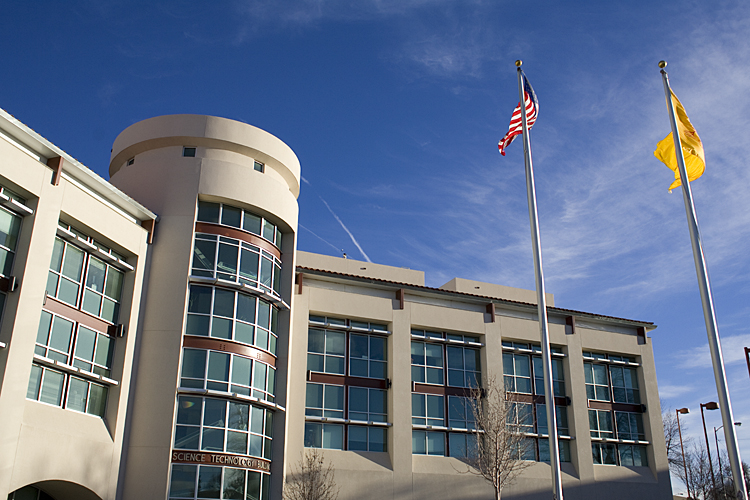
Ivan Hilton Science and Technology Building
Ivan Hilton was a former member and president of the Board of Regents at Highlands. He was a founder and long-time president and chief executive officer of the First National Bank of Las Vegas. Hilton owned the property on which the building stands and donated it to the university in 1985. He also served as mayor of Las Vegas and state senator.
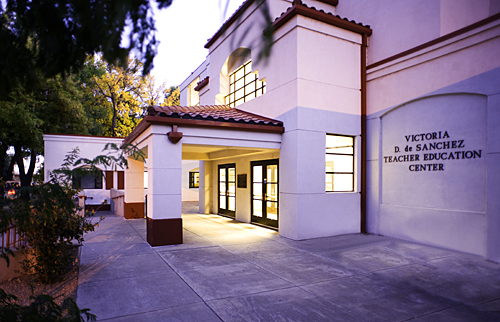
Victoria D. de Sanchez Teacher Education Center
Victoria D. de Sanchez was recognized internationally as an education pioneer in a career spanning nearly five decades. De Sanchez was a 1939 Highlands graduate, earning her master’s in 1944, and became one of the first two Hispanic native New Mexicans to serve as a Highlands professor. She was best known for becoming the highest-ranking woman in the international Alliance for Progress and her work to develop Spanish textbooks and teacher training materials in six countries, affecting millions of students who had not previously had such materials. She worked as a teacher, administrator and adviser in New Mexico as well as various Latin American countries, establishing a teacher training school in Guatemala. She retired in the 1970s and published her memoirs, “In the Footsteps of an Educator,” in 1989.
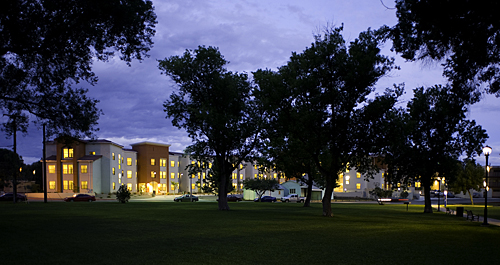
Viles & Crimmin Residence Hall
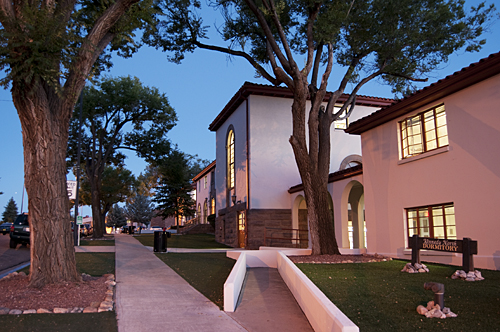
Kennedy Hall
The residential hall was built in 1942 and named for Margaret Kennedy, English professor and dean of women. Kennedy also served on the committee that established West Las Vegas High School. She was a world traveler and served on a pre-World War II committee that lectured on education in China.
Connor Hall
The residential hall is named for James E. “Colonel” Connor, who joined the Highlands community in 1940 as comptroller and who assisted then president Thomas Donnelly in campus expansion.
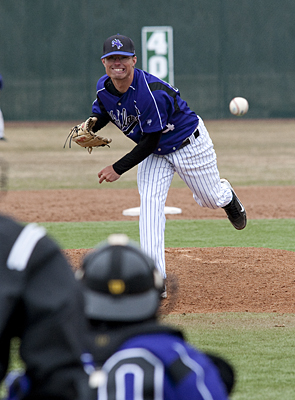
Harold Brandt Baseball Field
Originally from Michigan, Harold Brandt came to Highlands in 1938 when he was offered the position of chair of the Industrial Arts Department. He held this position for 36 years. During World War II, he coordinated the Navy V5 program at Highlands. Under this program, many Navy pilots learned to fly at the Las Vegas airport. In 1954, he was instrumental in starting the first two-year technical institute in New Mexico. Associate degree programs were offered in electronics, electrical and machine technology. For 25 years, Brandt served as chairman of the Highlands’ Faculty Athletic Committee. In 1972, he was elected city councilman and in 1976 was elected mayor of Las Vegas.
L. Michael Messina Field
Former Highlands Board of Regents member L. Michael Messina is a prominent Albuquerque attorney. Messina is a graduate of Dartmouth College and Yale Law School. After practicing with a Wall Street firm, he worked with legal Services of Albuquerque and then became director of the national health law program, litigating health issues across the country. Messina has had a private law practice for more over 30 years. He has taught at New Haven College, the UCLA School of Law, the UCLA School of Public Health and, on an adjunct basis, at the University of New Mexico Law School. He has served on the board of the New Mexico Educational Assistance Foundation and the New Mexico Council on Crime and Delinquency.
John A. Wilson Physical Complex
Wilson, chairman of the board, president and chief executive officer of Color Tile, Inc., a subsidiary of the Tandy Corporation, received his bachelor of arts degree from Highlands in 1948 and his master’s in 1950. He was awarded an honorary doctor of humane letters degree by the university in 1983. Wilson also served as president of the HU Foundation. He started his career in 1951 as a leather craft store manager then served as district manager, regional manager and vice president for both Tandy Leather and American Handicrafts and vice president of the Tandy Corporation. In 1974-75, he was president and chief operating officer of the corporation, and with the spinoff of Tandycrafts, Inc., in 1975, was named president, chief executive officer and a director of the new subsidiary. When Color Tile, Inc., was made a separate company, he became its CEO and board chairman, as well as president of Color Tile Mart, and serving on all Tandy Product boards.
Leveo and Patricia Sanchez Family Stadium
Named for long-term supporters of Highlands University. Leveo Sanchez is a dynamic leader with decades of domestic and international business success and distinguished public service. He is a New Mexico native and returned to the state in 2006. In May, 2008, Gov. Bill Richardson appointed Sanchez to the Highlands Board of Regents.
From 1966 through 2005, Sanchez established several successful businesses in governmental and management consulting, banking, real estate development and investment, property management, and export trading.
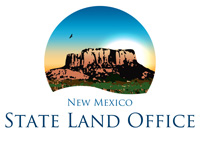
State Land Office
New Mexico Highlands University is a beneficiary of the state trust. There are 22 beneficiaries of the state trust that include public schools, universities and hospitals. Ray Powell, Commissioner of Public Lands is an elected state official responsible for administering the state’s land grant trust. Thirteen million acres of land were granted to New Mexico in 1898 and 1910. Each tract is held in trust for the public schools, universities, as well as special schools and hospitals that serve children with physical, visual, and auditory disabilities. The State Land Office strives to maintain a balanced approach in its administration of these lands, maximizing returns to the trust’s beneficiaries while preserving the lands, and the plants and animals that inhabit them, for future generations of New Mexicans. In fiscal year 2010, the trust lands and permanent funds produced more than $420 million in income for the beneficiaries. “When we take care of our land, our land takes care of us!” Learn more about the New Mexico State Land Office.
